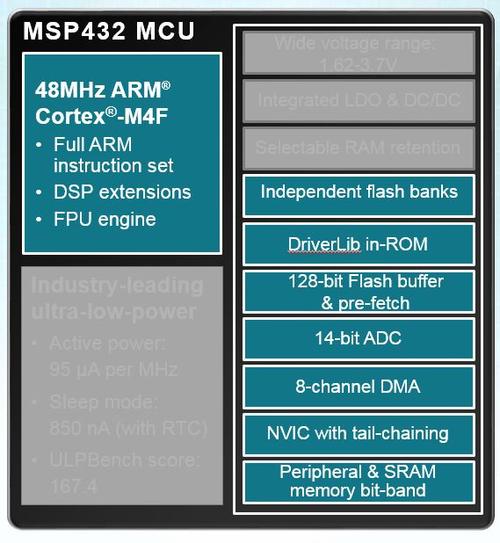|
|
|
 www.design-reuse-embedded.com
www.design-reuse-embedded.com |
|

TI?s 32-bit 'Successor' to the 16-bit MCU
TI uses all its tricks to achieve lower power
by Bernard Cole - EETimes, Mar. 24, 2015 –
This week, Texas Instruments (TI) rolled out its MSP432, a 32-bit alternative to the 16-bit MSP430 family of microcontrollers. It is also a new Arm-based MCU family designed to provide both MSP430 and Arm M0 developers migration paths to a more powerful and feature laden - but low power - architecture.
In order to create this low power architecture, TI built the MSP432 around the powerful Cortex-M4F core architecture (Figure 1) rather than the Cortex-M0 core developed by Arm in 2008 as a 32-bit alternative for licensees targeting applications that used 8- and 16-bit MCUs.

In an interview with EE Times, TI Product Marketing Engineer Mione Plant explained that, when it was first introduced, the Cortex-M0 was a good architecture for the embedded applications that existed at that time. Created to specifically target 8- and 16-bit slots, the 3-stage pipelined M0 implemented a minimum subset of instructions, mostly 16-bit Thumb 1 instructions and some Thumb 2 type 32-bit instructions, with the aim of achieving a very small die size and power consumption.
Click here to read more...
 Back
Back Contact Us
Contact Us